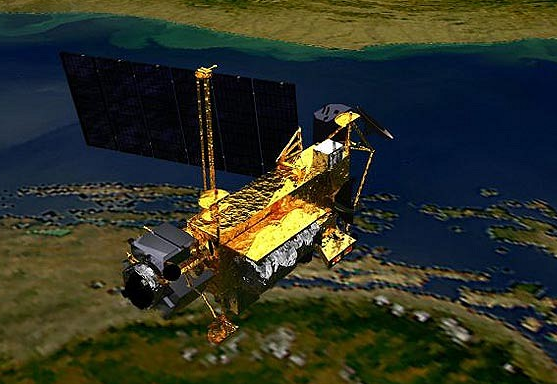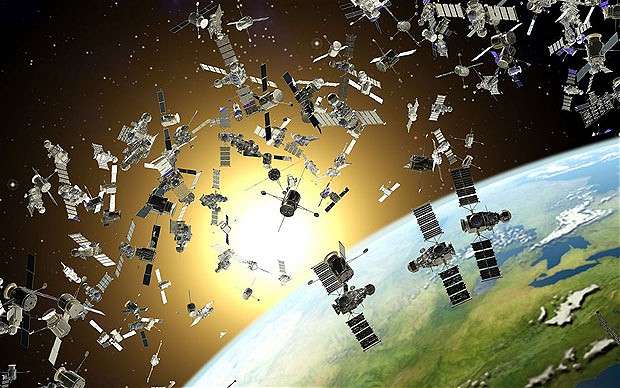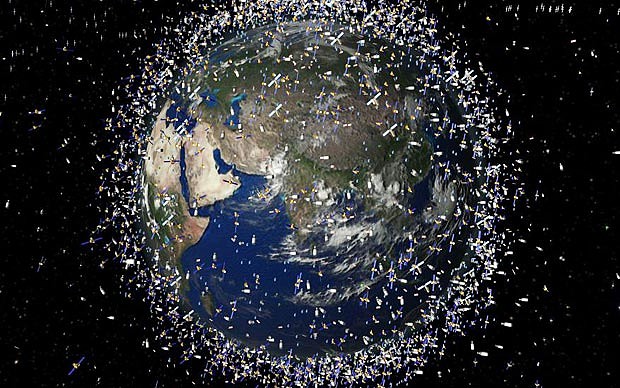
The $750 million (£468 million) Upper Atmosphere Research Satellite (UARS) satellite, launched 20 years ago to study climate change, is set to breach the atmosphere within weeks.
In a new alert issued this week, officials warned pieces could land in densely populated areas on six continents including parts of Britain, Europe, North and South America and Asia.
Nasa claimed the risk to public safety from the "dead" satellite - which is orbiting just over 155 miles above the earth with an inclination of 57 degrees - was "extremely small".
But senior space agency officials admitted they were "concerned" about the risk to billions of people when it starts falling uncontrolled out of orbit at any stage from later this month.
NASA admitted more than half a tonne of metal from the satellite, which ran out of fuel in 2005, will survive as the majority of it will burn up after entering Earth's atmosphere.
Scientists estimate the debris footprint will be about 500 miles long with a 1-in-3,200 chance a part a satellite part could hit someone.
While Nasa did not know the exact areas it will fall, the projected danger zone has been narrowed to areas between 57 degrees north and 57 degrees south of the Equator.
These areas cover six continents and billions of people and three oceans.
"Things have been re-entering ever since the dawn of the space age; to date nobody has been injured by anything that's re-entered," said Gene Stansbery, NASA's orbital debris chief.
"That doesn't mean we're not concerned."

Scientists will rely on data from radars and other deep-space telescopes located at nearly three dozens points around the world based on more than 80,000 observations of space every day.
A NASA spokesman added: "Although the spacecraft will break into pieces during re-entry, not all of it will burn up in the atmosphere. The risk to public safety or property is extremely small, and safety is NASA's top priority.
"It is too early to say exactly when UARS will re-enter and what geographic area may be affected, but Nasa is watching the satellite closely."
It was unlikely that any hazardous material was left in the satellite but officials warned people wanting to cash in on it, not to touch any fallen parts.
"If you find something you think may be a piece of UARS, do not touch it. Contact a local law enforcement official for assistance," the spokesman added. Nasa will track the satellite on a weekly and later daily basis until it falls.
The satellite, launched by the Space Shuttle Discovery in 1991, is 35 feet long, 15 feet in diameter and weighs nearly six tonnes. It was designed to operate for three years but six of its ten instruments are still working.
Scientists say UARS measures ozone and chemical compounds found in the ozone layer and how they affect the earth's ecosystems, winds and temperatures in the stratosphere and energy input from the Sun.
"Together, these help define the role of the upper atmosphere in climate and climate variability," a spokesman added.

Last year, a Pentagon report warned that space was so littered with debris that a collision between satellites could set off an "uncontrolled chain reaction" capable of destroying the communications network on Earth.
The volume of abandoned rockets, shattered satellites and missile shrapnel in the Earth's orbit is reaching a "tipping point" and is now threatening the $250 billion (£174bn) space services industry, according to the US Defense Department's interim Space Posture Review.
Meanwhile in a report earlier this month, the National Academy of Sciences admitted that scientists had "lost control" of the space environment.



Wonder if it is really a satellite set to fall? It wouldn't be unheard of for the PTB to lie about such things to prevent panic at the idea that there are comet fragments out there that can do serious damage.